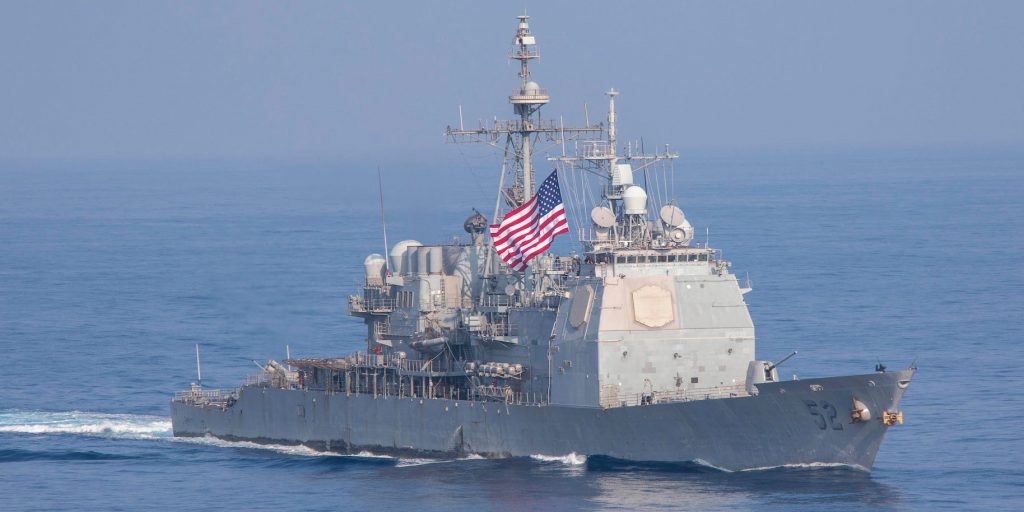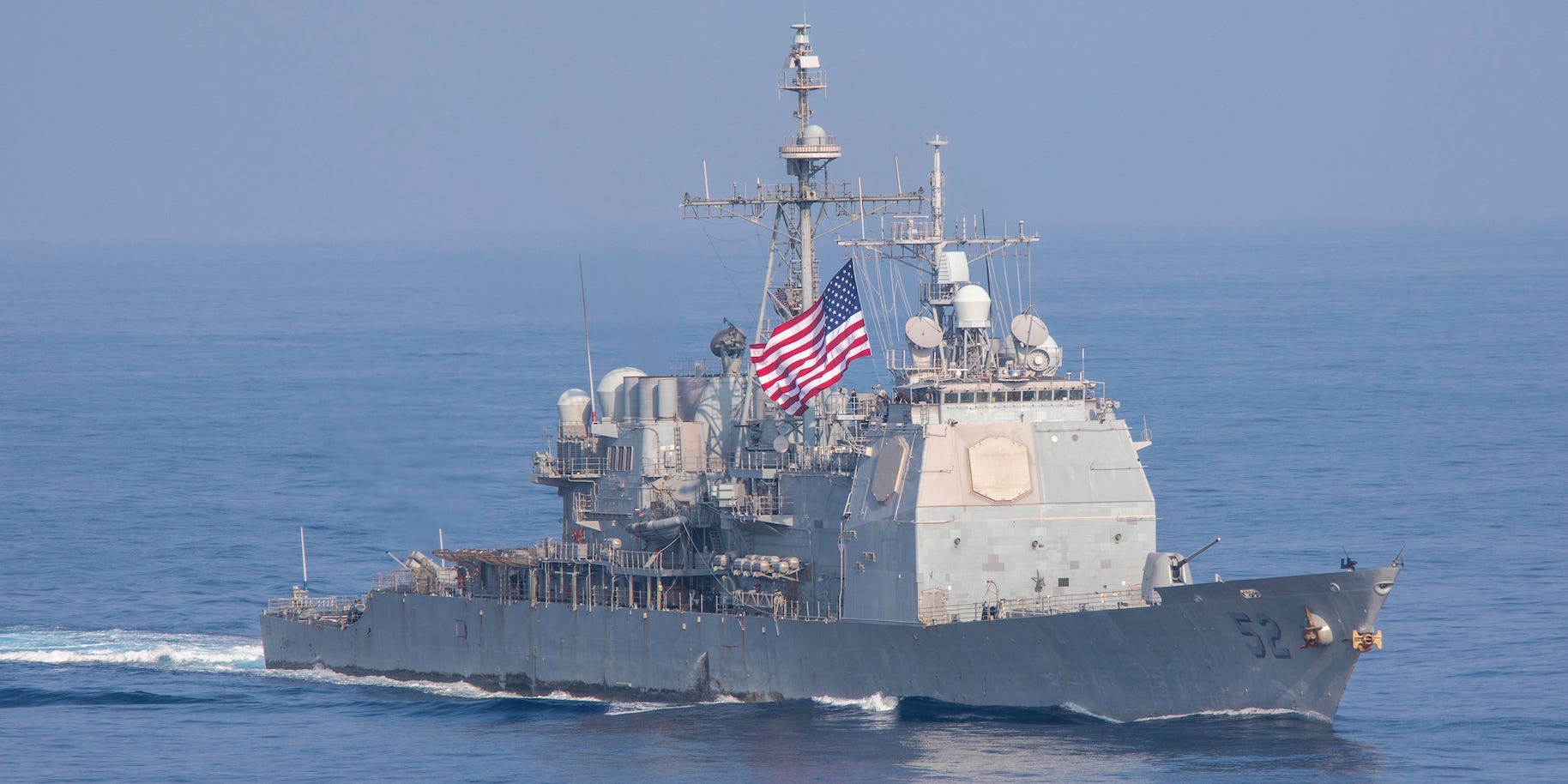
US Navy/MCS3 Ethan Jaymes Morrow
- The US Navy's Ticonderoga-class cruisers are the largest and most well armed of its surface fleet.
- But the Navy has spent nearly a decade trying to get rid of its cruisers, arguing they are expensive and unreliable.
- Congress has fought those efforts, and the Navy's latest attempt already looks set to encounter resistance.
- See more stories on Insider's business page.
After the decommissioning of its final battleship in 1992, the US Navy's cruisers became the largest and most well-armed warships of the surface fleet. Today, the Navy has 21 active Ticonderoga-class cruisers, with one laid up.
Able to carry a whopping 122 missiles and other weapons, the Ticonderogas pose a significant threat to any enemy and have played a central role in the Navy's power-projection since 1980.
Despite this, for nearly a decade, the Navy has been trying to get rid of its cruisers, citing their age and upkeep costs. Congress has repeatedly rebuffed the service's plans, primarily out of fear that losing the ships could limit American ability to respond to threats from China.
But the Navy is committed to divesting its cruisers, and its most recent effort, outlined in the Navy's 2022 budget request, looks set for another intense debate in Congress.
The Ticonderoga class

US Navy/PH1 Toon
With the decommissioning of the US Navy's last Virginia-class nuclear-powered cruiser in 1998, the ships of the Ticonderoga-class are the sole cruisers in service.
Twenty-seven Ticonderogas were built between 1980 and 1994, and they represented a considerable step forward for the Navy's cruiser force.
They were the first ships to feature the AEGIS Combat System, which uses computers and radars to track hostile forces and guide friendly missiles and guns.
They are also armed to the teeth. The first five cruisers were armed with two Mark 45 5-inch guns, two Phalanx Close In Weapon Systems, two triple-tubed Mark 32 torpedo launchers, and up to 96 missiles launched from two twin Mk 26 guided-missile launchers and two quadruple Mk-141 missile launchers.
The next 22 cruisers were even better armed. The two Mk 26s were replaced with two Mk 41 Vertical Launching Systems (VLS). With 61 cells each, the VLS allow a single Ticonderoga to carry up to 122 missiles, in addition to its other armaments.
Cruisers can carry a variety of missiles, including BGM-109 Tomahawk cruise missiles, RGM-84 Harpoon anti-ship missiles, RIM-162 ESSM surface-to-air missiles, and RUM-139 VL-ASROC anti-submarine missiles. It can also fire anti-satellite or anti-ballistic missiles.
Service
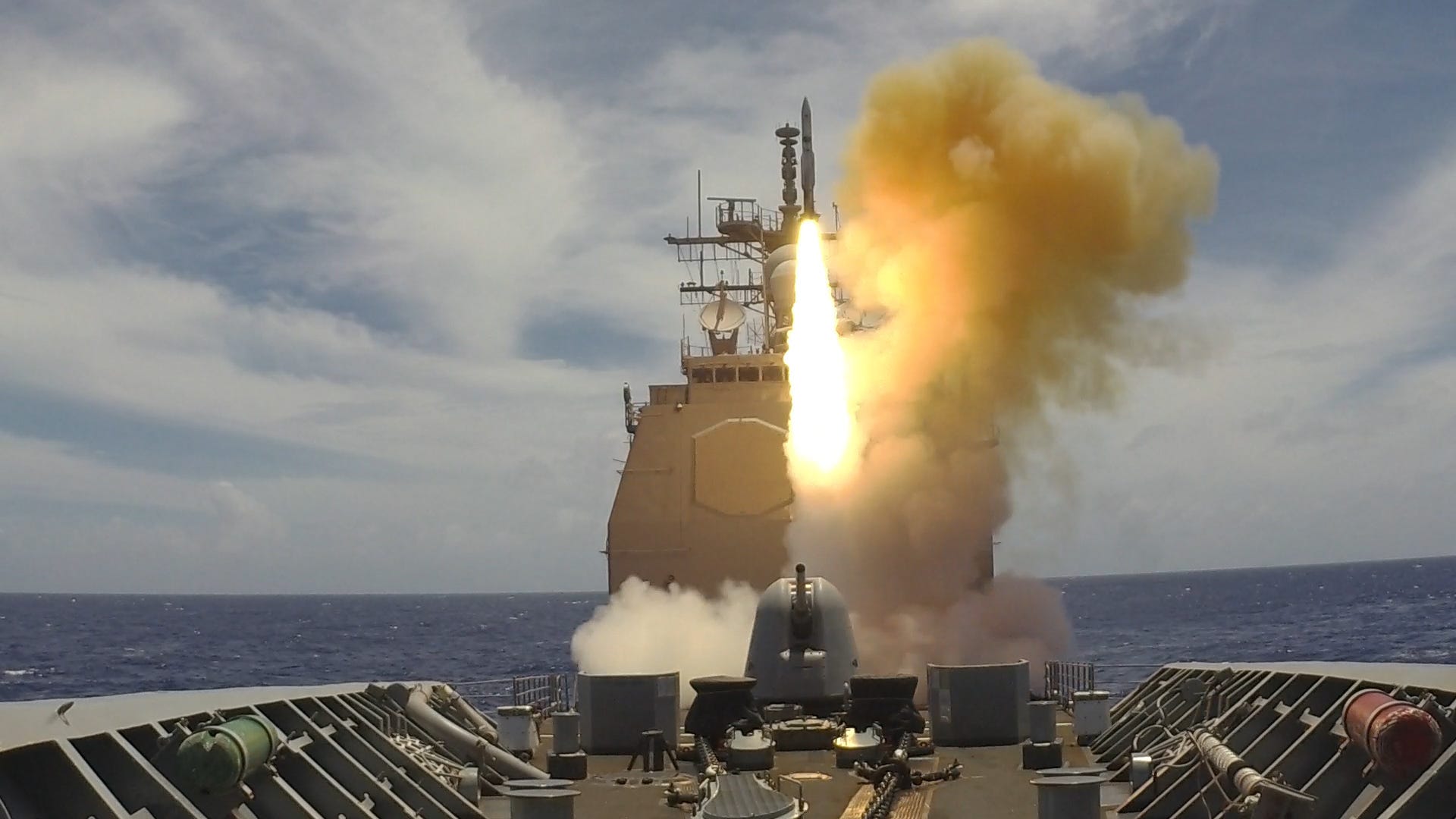
US Navy/MCS2 Ryre Arciaga
Because of their massive arsenals, Ticonderogas can serve air-defense, anti-ship, anti-submarine and ground-strike roles.
They are most commonly used as air-defense escorts in carrier strike groups, but can also operate as flagships for surface action groups.
Ticonderoga-class cruisers have served in nearly every combat operation the US has conducted since the first cruiser was commissioned, and have played important roles in a number of other operations.
In the 1980s, the cruisers escorted oil tankers during Operation Earnest Will and were part of US operations against Libya.
In the 1990s, Ticonderogas provided air-defense and conducted missile strikes during Operation Desert Storm, as well as a 1993 strike in Iraq in retaliation for a planned assassination attempt on former president George H.W. Bush.
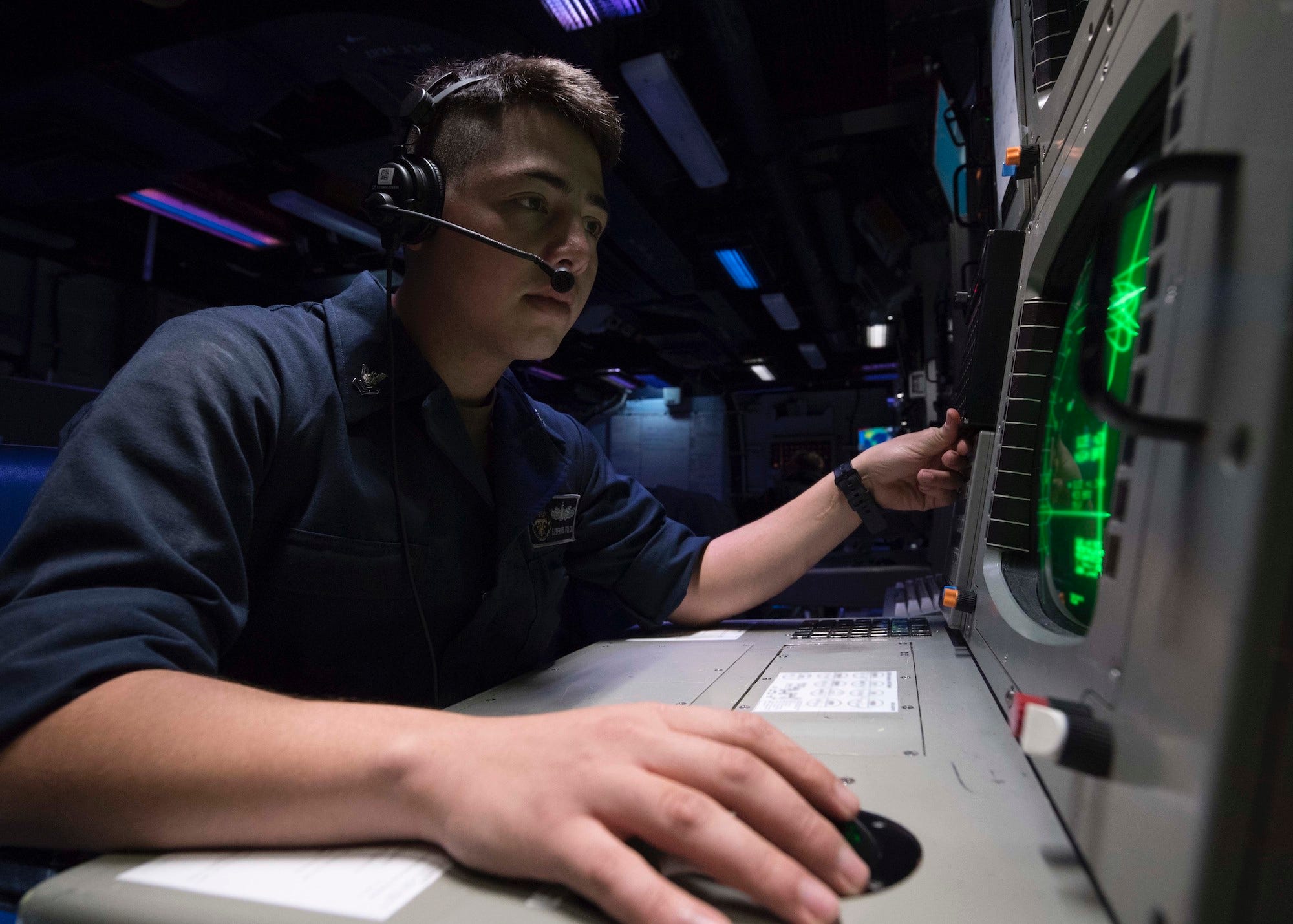
US Navy/MCS William McCann
The cruisers also helped enforce a no-fly zone in Iraq and were present during the Third Taiwan Strait Crisis between 1995 and 1996.
In the 2000s, Ticonderoga-class cruisers participated in the Invasion of Iraq, strikes on Libya, anti-piracy operations off Somalia, and numerous hurricane relief operations and international naval exercises.
Other noteworthy events include USS Lake Erie successfully destroying a non-functioning US spy satellite with a SM-3 missile before it reentered the Earth's atmosphere in 2008 and USS Chancellorsville's near-collision with a Russian destroyer in the Philippine Sea in 2019.
Their status as the strongest surface vessels in the Navy also make them prime candidates for freedom of navigation exercises in the South China Sea.
Decommissioning debate
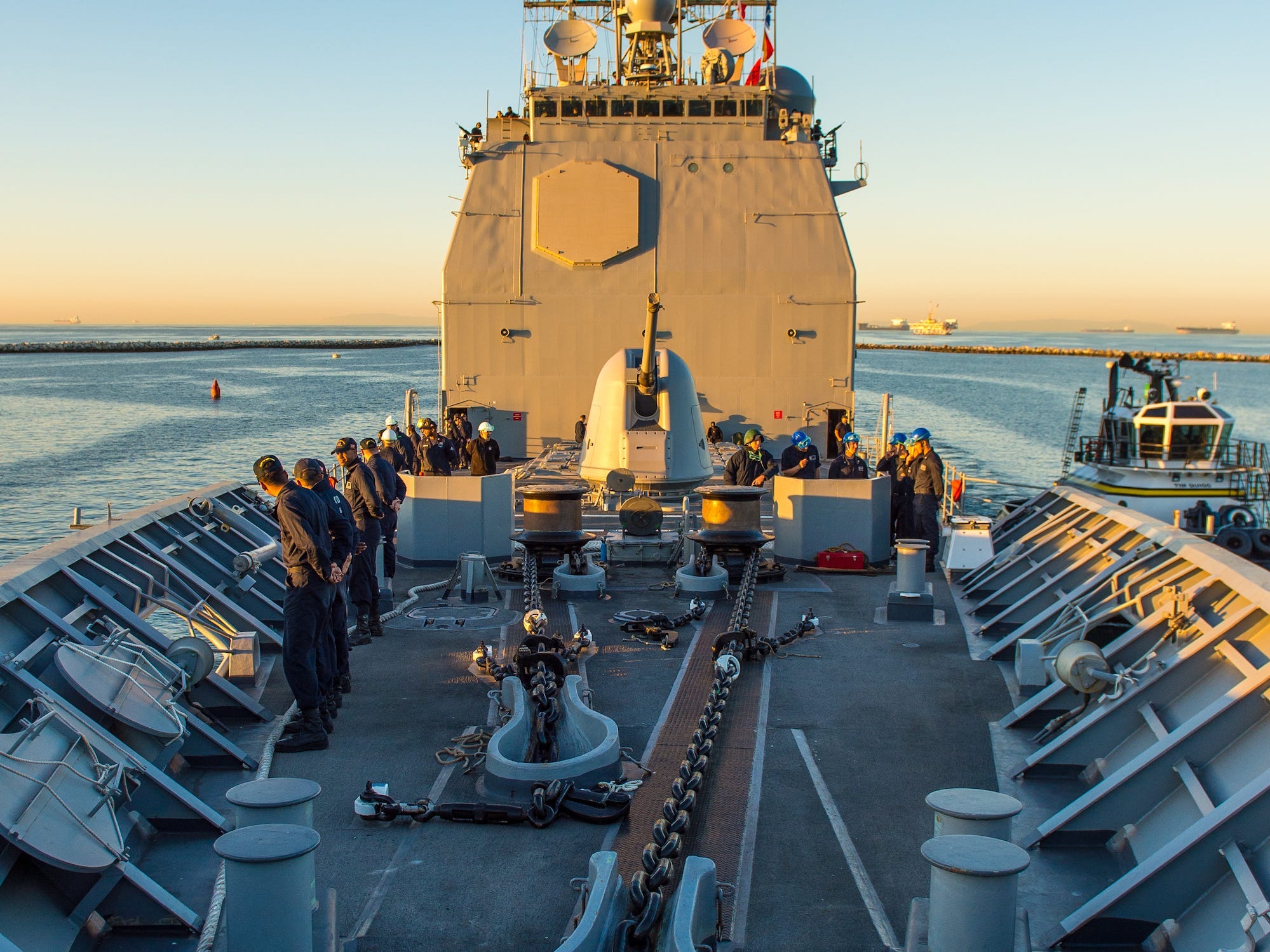
US Navy/MCS1 Chad M. Butler
The Navy has pushed to decommission its remaining cruisers for almost a decade.
The service's concerns, according to Chief of Naval Operations Adm. Michael Gilday, are threefold: They are too costly to operate, their age has begun to cause reliability problems, and their lethality has decreased as some of their systems (like the SPY-1A and SPY-1B radars) are "approaching obsolescence."
"These ships on average right now are 32 years old," Gilday said at a Navy League event in July.
"We are seeing challenges in the material conditions of these ships that are, to a certain degree, unpredictable," he added, pointing to fuel tank cracks that recently forced a cruiser to return twice to port unexpectedly.
Gilday said that the operating costs of the seven cruisers proposed for decommissioning "is about $5 billion over the five-year defense plan." At a House Armed Services Committee hearing in June, he said cruiser modernization efforts "are running 175% to 200% above estimated costs," and causing "hundreds of days' delay."
The cost of modernizing just two cruisers, USS Hue City and USS Anzio, is about $1.5 billion, Vice Adm. Jim Kilby told Congress last month.
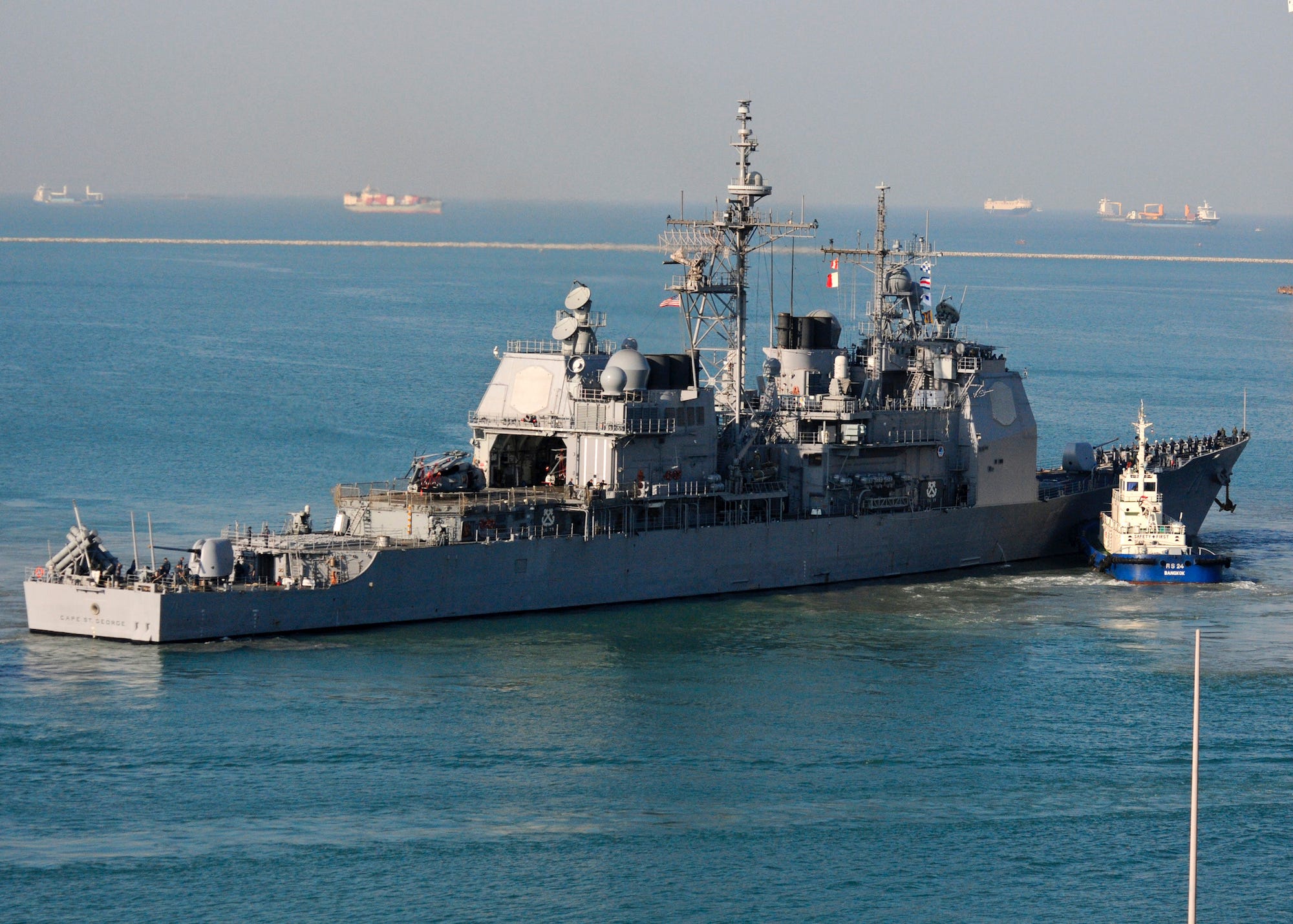
US Navy/Master Chief Petty Officer Adam Randolph
The Navy has proposed canceling the planned modernizations of six cruisers and cutting the total number of cruisers to nine by 2025.
The first five cruisers were decommissioned between 2004 and 2005, but since then Congress has shot down the Navy's plans to retire the remaining Ticonderogas.
In 2013, Congress denied a budget request that included the retirement of seven cruisers over a two-year period. It also rejected plans to retire 11 cruisers while laying up the other 11 for modernization.
In 2015, the Navy agreed to a "2-4-6" plan, wherein it could only lay up two cruisers a year for four years and couldn't modernize more than six ships at the same time.
The debate is far from over. The most recent proposal to retire seven cruisers has already met resistance.
The Senate Armed Services Committee's proposed 2022 National Defense Authorization Act forbids the early retirement of ships "unless the Secretary of the Navy makes certain certifications to Congress."
But the House Armed Service's subcommittee responsible for naval forces has said its version of the NDAA won't prevent the Navy from retiring cruisers.
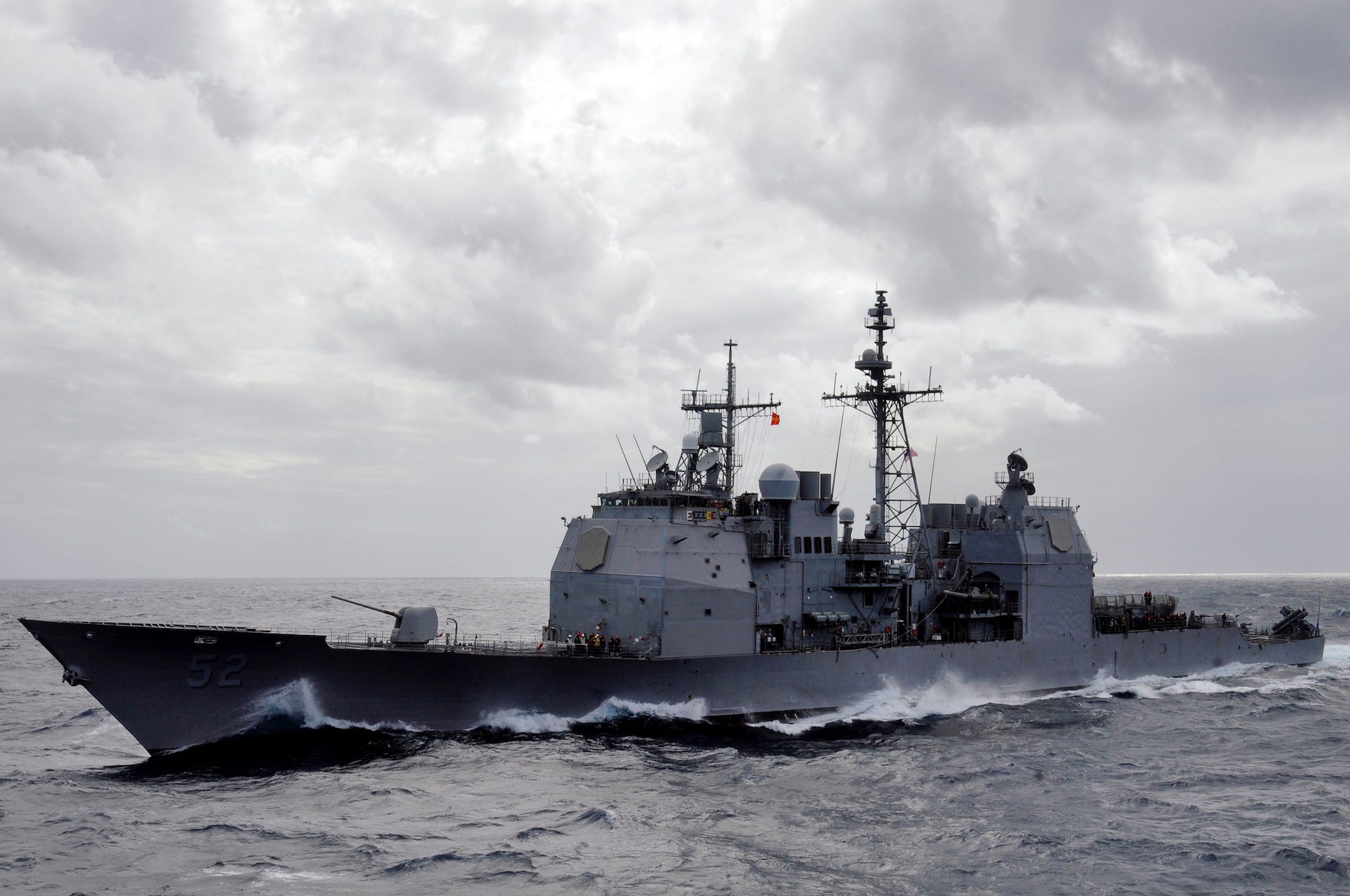
US Navy
Rep. Adam Smith, chairman of the House Armed Services Committee, has said the Navy shouldn't have more ships than it can afford, but Vice Chair Rep. Elaine Luria, a former Navy officer who was executive officer on a cruiser, has argued the cruisers' capabilities are too important to lose given the threat from China.
"You have to have ships. You have to have a platform," Luria said at a recent think-tank event. "So I'm a strong advocate of not decommissioning seven cruisers, and you'll see over the NDAA cycle, I think there'll be a fight over that."
Rep. Rob Wittman, the top Republican on the House Armed Services Committee, has not decided but "has some pause with regards to getting rid of this cruiser force structure," a committee aide told reporters in July.
The Navy argues that there will be no substantial loss of capability, as the money saved by scrapping the cruisers will go to other systems, like Virginia-class submarines, Constellation-class frigates, and Flight III Arleigh Burke-class destroyers, as well as weapons like new Tomahawk missiles and hypersonic missiles for the Zumwalt-class destroyers.
Meanwhile, China plans to build a force of formidable new Type 055 Renhai-class cruisers, which each carry 112 missiles. Three Renhais are in service today, and Beijing has reportedly ordered at least 16 in total.
